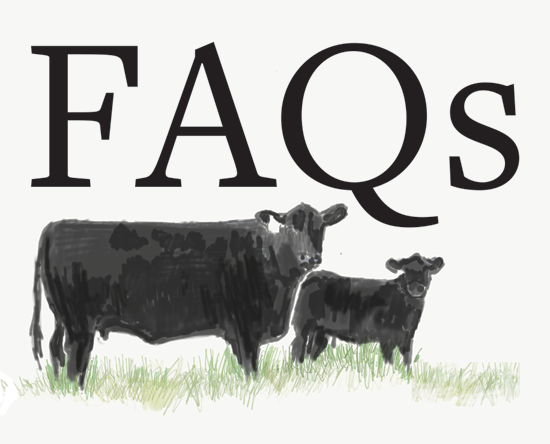
SWOT Analysis for You and Your Ranch
Gauging operational strengths, weaknesses, opportunities and threats is a great way to start the year.
With any approaching new year, there are grand plans of going to the gym, drinking less, eating more vegetables and so on. While those are great goals, they mean little and might not get accomplished if there isn’t a plan behind them. The same can be said of your operation. Maybe next year is the year you want to expand your herd, pay off debt or finally replace a fence that keeps coming down. Whatever the goal is, if there’s no plan to get it done, it will fall by the wayside of “someday.” The best way to develop a plan to reach your goals is to figure out your operation’s baseline. Where is it now?
What is a SWOT analysis?
A SWOT analysis (strengths, weaknesses, opportunities, threats) is something you can complete now so that you can set your operation up for success as you move into the more hectic times that spring brings. A SWOT analysis is essential — not only for your operation, but for yourself. Agriculture is notorious for being stressful. How did this year feel? Did it feel like your operation was just surviving? Was your stress level at an all-time high? What were the effects on your family? Reflection and analysis are hard. Really hard. Still, we don’t learn from our experiences; we learn from reflecting on our experiences.
The purpose of a SWOT analysis is to identify internal and external trends — whether they are positive or negative, helpful or harmful to your operation. Completing a SWOT analysis also allows you and your team members (family, business partners, etc.) to identify the environmental, physical and political climate of the farm business. Maybe everyone is on the same page with the conservation strategy and doing the Environmental Quality Incentives Program (EQIP), but maybe your son isn’t too keen on how the new hired man does things. Once you complete a SWOT analysis, you can determine if something will assist your operation in achieving the goals you set for it (a strength or opportunity) or if there’s an obstacle to overcome or minimize to achieve your goals (a weakness or threat).
Strengths and weaknesses The first two parts of a SWOT analysis, strengths and weaknesses, typically focus on the inner workings of your operation. These are things that are typically within your control. Strengths help you carry out your operation’s vision, while weaknesses are the exact opposite. They are deficiencies in competencies and resources that limit how far your operation can carry out its vision. Some examples of strengths could be that your operation practices low-stress animal handling and that your wife has an accounting degree, so she’s able to handle the books. Weaknesses could be that there is no transition plan in place for when you need to pass the operation to your children or that your off-ranch sister is asking for a bigger check at the end of the year. Below are some prompts to help you think about your operation’s strengths and weaknesses.
Questions to help you reflect on operation strengths:
- What strengths does your operation have that make you competitive?
- Is the morale of your family and employees high?
- What natural resources does the ranch have?
- What do your customers see as your strengths?
- Why do they buy from you? (Don’t be afraid to ask!)
Questions to help you reflect on operation weaknesses:
- What could you improve?
- What do competitors do better or differently than you do?
- What resources are lacking?
- What needs to be developed more?
- What enterprise is least profitable?
Opportunities and threats
The last two parts of a SWOT analysis — opportunities and threats — require you to step outside your operation and look at it from an outsider’s perspective. These are issues that you cannot control, but you can develop management strategies to enhance or reduce their effect to your operation.
Opportunities are external positive circumstances, while threats are external negative circumstances that affect your operation. An opportunity could be that a new processing facility is opening in your area, which means that your trucking costs will likely decrease. Or, you may live close to a large metropolitan area with consumers who want local meat.
Threats could be that an out-of-state owner just bought up the sections around your place, so you feel hemmed in. Or, there could be a threat from key relationships that are floundering — between yourself and your spouse, or between you and your ranch hand. Whatever the threat, you should work to develop a plan to resolve the problem, or find ways to practice acceptance.
Below are some prompts to get you thinking about your operation’s opportunities and threats.
Questions to help you reflect on operation opportunities:
- Are there new technologies that you can use to lower costs?
- What networking can you develop further to leverage for your operation?
- Are there new government policies or programs that will help you achieve your goals and improve your operation?
- Is there a new consumer “trend” that is predicted to be around for a long time? In what ways could you capitalize on that?
Questions to help you reflect on operation threats:
- What new regulations do you need to be aware of? How will they affect you?
- Do you have bad debt or problems with cash flow?
- Are all your employees appropriately trained and motivated?
- Is the operation producing too many different commodities? Do you need more focus?
In summary
Remember, there are no set guidelines for completing a SWOT analysis. It serves as one starting place for looking at your operation holistically. Completing a SWOT analysis allows you to evaluate the current position of your operation and decide on management strategies that will help you achieve your goals for next year. Doing this at the beginning of the year can help you get out of a “survival mode” and into a “strategic mode.” Are you ready to make some changes?
Editor’s note: Krista Ehlert is an assistant professor and SDSU Extension range specialist. Photo by Getty Images.
References:
Ohio State University Extension. Conducting a SWOT Analysis of Your Agricultural Business. Chris Zoller and Chris Bruynis.
University of Wisconsin–Madison, Extension. Assess your Farm Business using a SWOT Analysis.
